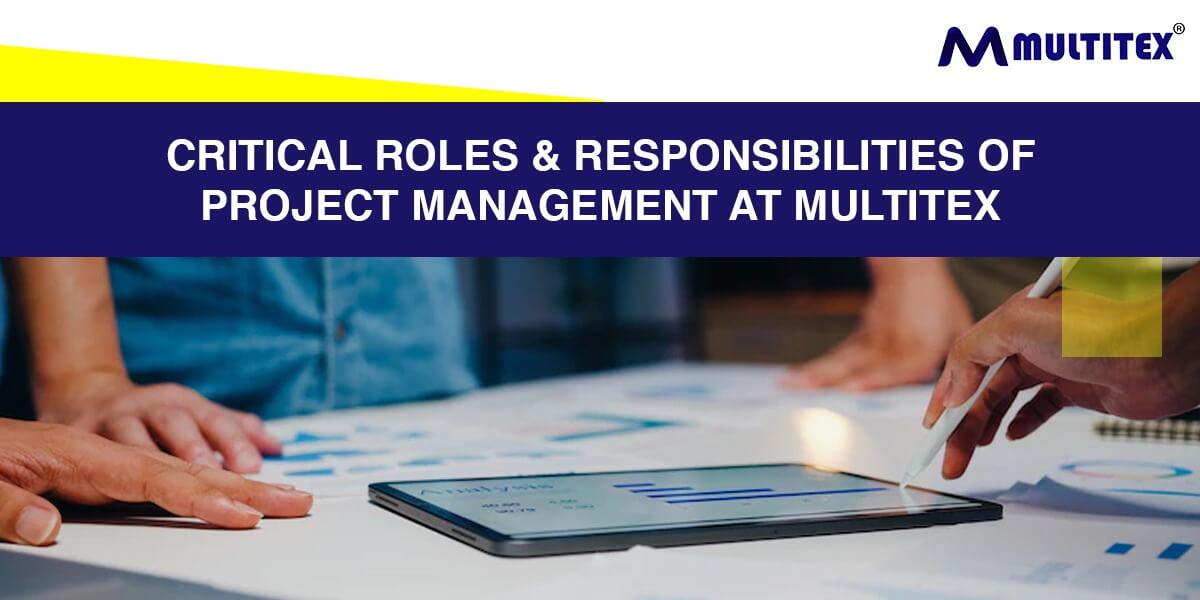Is about safely managing all aspects related to the execution of a project to ensure PROJECT EXECUTION & DELIVERY to a customer “consistent to committed quality, within the contractual time period and to approved cost” by our PROJECT MANAGER. In short, we holds “single-point responsibility” for all aspects related to the safe execution of a PROJECT, both for our customers and our internal organization. Undoubtedly, a Project Management shoulders a lot of responsibilities as the LEADER for PROJECT EXECUTION & DELIVERY.
Critical roles & responsibilities for our Project Management are elaborated on below.
- PROJECT ESTIMATION: During the SALES stage, a “TOTAL ESTIMATED COST to DELIVER” potential project is estimated. To ascertain such “TOTAL ESTIMATED COST”, the project requirements are divided into various heads & sub-heads. For example, specialists required from internal resources (i.e. type, numbers, duration, etc) for project execution; services required from external agencies (like for packaging & transportation, specialized engineering & inspection, etc); equipment & raw materials to be procured; equipment & skids to be fabricated; contingency; financing expenses; taxes, duties & levies; etc. Against each head & sub-head, a cost is assigned and summed up to arrive at a “TOTAL ESTIMATED COST to DELIVER”. To this “TOTAL ESTIMATED COST” is added an expected PROFIT as defined by upper management. Our team will deliver the project within the bounds of such “TOTAL ESTIMATED COST”. In this role, our Project Management will monitor the cost as project execution proceeds and will regularly present to upper management “COST REPORTS” as a part of the PROJECT ESTIMATION role, including to seek approval for items that are expected to exceed original estimates.
- PROJECT MONITORING & CONTROL: This relates to the management by our team of the execution of a project. It consists of two critical elements i.e. “MONITORING of project schedule” and “CONTROL of both cost & schedule”. Our Project Management regularly manages, evaluates & assesses through a “look ahead” analysis (including presenting regular “REPORTS”) for both critical elements. Knowledge of project management principles, an understanding of the project under execution, overall exposure & experience, etc, play an important role in supporting our team with PROJECT MONITORING & CONTROL.
- RISK MANAGEMENT: By definition, a Risk Management is any element OR process that can cause (OR already has caused) an impediment/ a challenge to achieving “smooth execution of a project”. Such RISKS can relate to several potential elements such as technical information flow, technical knowledge, sourcing challenges, lack OR inadequacy of skill level of resources, delays, inaccuracies & errors, higher cost, commercial & legal aspects, etc. During the process of managing a project, our Project Management reviews “existing challenges” that a project is experiencing and takes steps to address those. Further, our Project Management assesses “potential risks” that a project may experience in the future and defines steps for/ put into action, “applicable mitigation plans”.

- HUMAN RESOURCE MANAGEMENT: This is covered thro’ PROJECT MONITORING & CONTROL, not separately
- SCHEDULE MANAGEMENT: This is covered as a part of PROJECT MONITORING & CONTROL
- VENDOR MANAGEMENT: VENDOR MANAGEMENT: for execution of any project, sourcing/ procurement from external entities is required. Such external entities are called VENDORS. Our ability to deliver a quality project to our customer is as much dependent on our resources & performance at Multitex, as that of our VENDORS. Hence, management of our vendors is critical. To this end, Multitex maintains a list of approved/ acceptable VENDORS for sourcing/ procurement of various components & materials for our projects. Updating this list of approved/ acceptable VENDORS is a critical part of overall project management. The exercise of updation includes “post delivery” evaluation (i.e. technical, commercial, & organisational) of each VENDOR. Additionally, our customer will share its own list of approved/ acceptable VENDORS. Thus, for a given project, the two lists of approved/ acceptable VENDORS are merged/ amalgamated for necessary sourcing/ procurement for such project.
- PROJECT PLANNING: This is another critical role for our management team. With support from the “project planning” resource(s), at the start of each project, a detailed project schedule is prepared. For PROJECT PLANNING, project scheduling software is available e.g. PRIMAVERA, MS Project, etc. Our management team will define the activities for a PROJECT PLAN. Such activities will be consistent with the project requirements such as work process, required technical specialists, the time required for completion, inter-relations between activities, contractual commitments, procurement & fabrication cycle, etc. The final PROJECT PLAN is approved both by our management and by our customers. Thereafter, such PROJECT PLAN is regularly updated as a part of the PROJECT MONITORING & CONTROL role of our PM.
- PROCUREMENT: This is covered thro’ PROJECT MONITORING & CONTROL, not separately.
- PROJECT QUALITY CONTROL: Based on the technical requirements of a project, our Management team will prepare a PROJECT QUALITY PLAN. This PROJECT QUALITY PLAN is a collation of documents that defines the technical codes (i.e. customer-specific, international, local, statutory, etc) that must be adhered to as project execution proceeds (i.e. during engineering, for procurement, during fabrication, during the inspection, etc), the technical approvals required, the technical approving authorities, the approval documents & certificates required, etc.
- STAKE-HOLDER MANAGEMENT: This is covered thro’ PROJECT MONITORING & CONTROL, not separately.
- CONTRACT MANAGEMENT: There are two parts to contract management. The first is the creation of a mutually acceptable document between two parties i.e. a SELLER and a BUYER. The second part is the management of such “mutually acceptable agreement” thro’ the execution phase of a project. Depending upon the nature of a project, such a “mutually acceptable document” can be in the form of a purchase order (PO) or an agreement i.e., a CONTRACT. It is a legally binding document. A CONTRACT will include technical & commercial terms and legal conditions. Hence, to arrive at a mutual agreement, stakeholders from both parties (i.e. SELLER and BUYER) must review each element documented therein. The status of “mutual acceptance” is documented thro’ the signing/ execution by both parties of the CONTRACT. Such fully executed CONTRACT becomes the primary document against which our PM and the teams of specialist engineers & commercial experts, etc, will abide by during the execution of the project. Our management plays the key role of managing the project based on the contract agreements.
- DOCUMENT MANAGEMENT: During the execution of a project, several documents related to engineering, procurement, fabrication, inspection, etc, will be generated. Each document must be managed concerning its classification & numbering, its transmission to approving authority for review & approval, for sharing with project teams (both internal & external), etc. Our Project Management will work with our team of specialists and a “document controller” to tabulate all documents as a “DOCUMENT CONTROL INDEX/ DCI”. This DCI is updated daily by the document controller and is available to our PM. Status of such DCI gets reported as a part of the PROJECT MONITORING & CONTROL role of our Project Management. For more information please contact Multitex.
